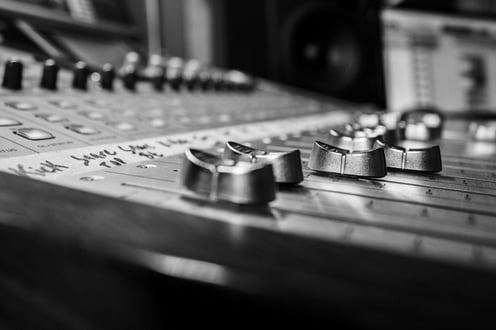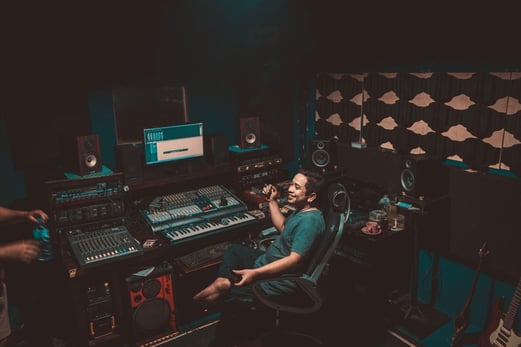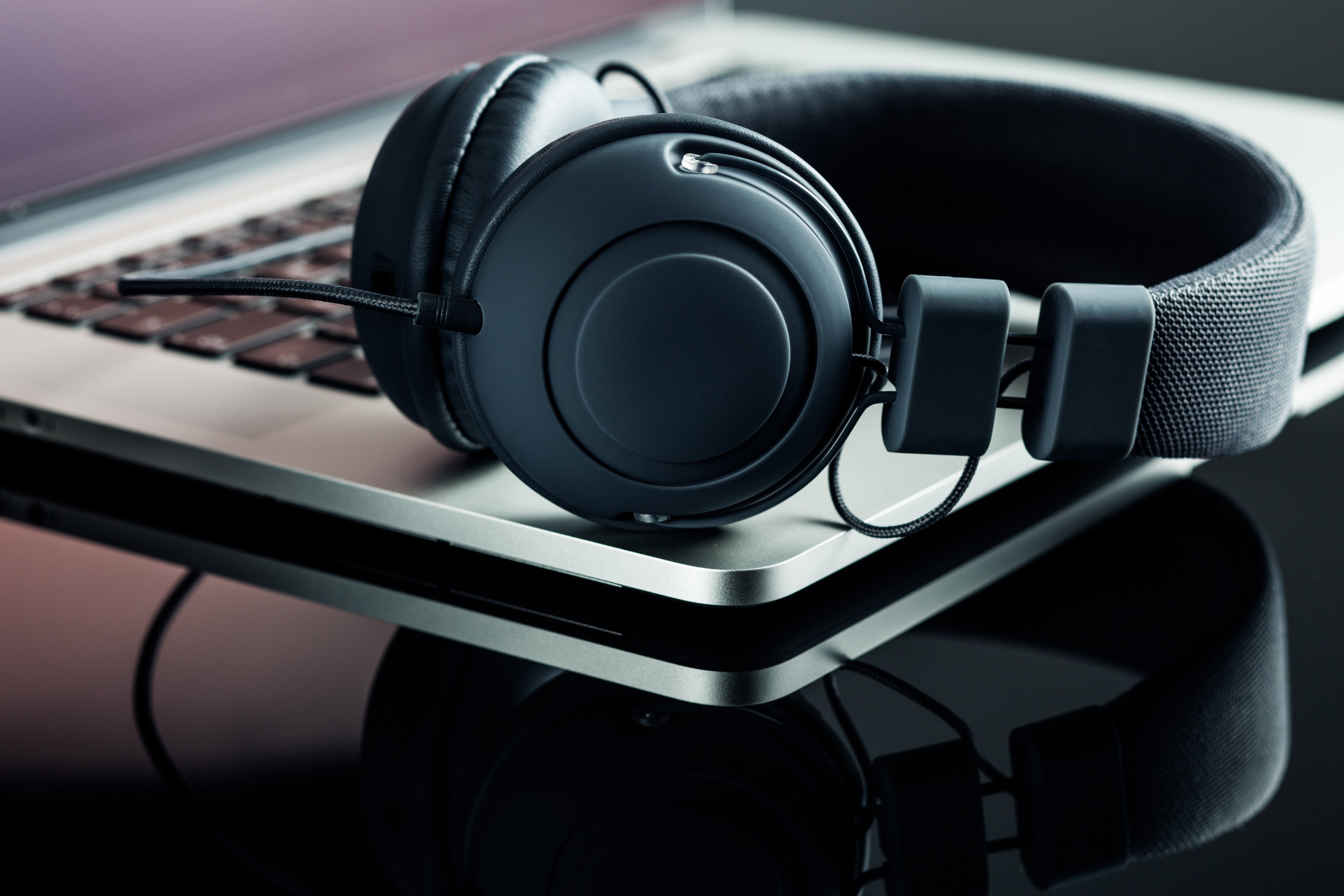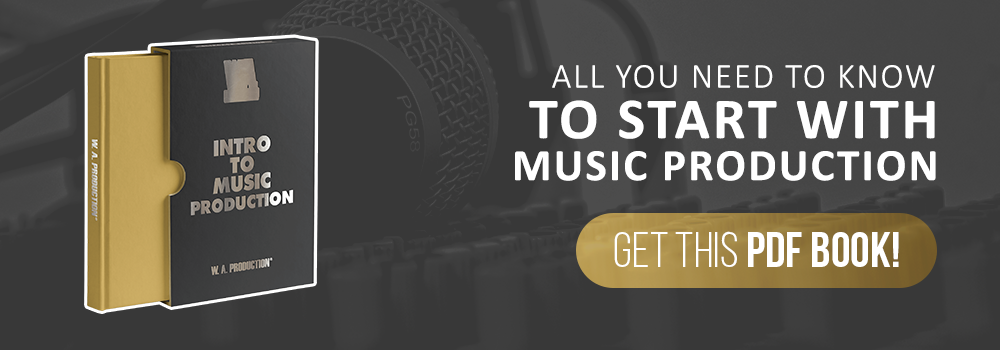Effective audio mixing can turn a good song into a great song, and a great song into an instant classic. Many engineers know that the key to building quality mixes consistently comes down to a combination of knowing the fundamentals, and developing your sonic intuition. In today’s article, we’re going to provide you with 12 highly fundamental mixing tips to ensure that your mixing process is always fluid, productive, and highly enjoyable. These are tips used by most sound engineers, from bedroom producers to professional studio mixing masters.
Organize and Oversee
Mixing is essentially an intuitive process, and you can make it easier to follow these intuitions fluidly by efficiently organizing your mixing sessions. Engineers can often burn themselves out if their mix sessions lack any sort of order or direction. Mix templates are a wonderful way to safeguard your workflow. Below are guidelines you can apply to your mixing sessions to help optimize your productivity.
Before mixing, write down a checklist of everything you wish to achieve in your session. Try to consider your time limitations (if any) and only write down what you can finish in one session.
Create a color-coded folder of your most used mixing tools and presets for quick access. For example, you could have a white folder for drums, a blue folder for bass, etc.
Set markers on specific sections of the track, ie; the intro, verses, chorus, drops, buildups, bridges.
Place relative instruments into groups for easier visual reference ie, drums, percussion, bass, keys, vocals, etc.
Gain Stage Before Processing
More often than not basic mixing issues can be solved or improved upon with a simple volume adjustment. If a mix element is too loud, it will naturally sound harsher on the ears and engineers often overcompensate for this when processing. Here’s a quick rundown of an easy gain staging process:
Turn off any processing devices that you may have on your instruments or mix elements ie: eq, compression reverb, etc.
Lower all the faders on every track until the song is completely silent. Also, make sure that every mix element is panned to the center of your stereo image.
Pick a specific area of your mixes like the drums or vocals, and slowly fade each element of this group into your mix until they are at your preferred volume level.
As you introduce each group into your mix you’ll go back and adjust certain elements that you’ve already brought in. Trust this instinct and let it direct you.
Gain staging generally saves engineers precious time in later sessions and also stops them from having to make any redundant mixing decisions.
Test Your Mix Everywhere
Ideally, your final mixed product is going to be played on a variety of sound systems, in different environments. As such, you’ll need to test your mix on a few different types of sound systems for the proper reference. Testing your mixes on different sound systems will help to confirm any mixing issues that you are unsure of. You’ll also hear certain mixing issues come up elsewhere that you may not have heard on your primary mixing setup.
Here’s a shortlist of common sources used for testing:
Studio Monitors
Car Sound System
Laptop and Cell phone Speakers
Portable Speakers
Stage or Nightclub Sound Systems
Also, make sure to check your mix at both low and high volume levels on each of these systems. Your ear will be able to pick up any issues if they are consistent across these environments.

Make Use of Reference Tracks
Reference tracks can be one the most useful tools for any engineer that is either lost for direction or mixing or mixing for another client. Just like musicians or composers, sound engineers should have a fair grasp of the work that inspires them. You can use these artists, songs, or albums as a pool of ideas to draw from during the mixing process.
The simplest quickest route to finding reference tracks that are relative to your arrangement lies in your music services. Your streaming sites like Youtube, Spotify, and Apple Music all have a reasonable collection of data on the songs you enjoy the most. Search amongst these songs for anything relative to the current work you’re busy with, whether it be for genre or mixing purposes. Use these tracks to compare mixed elements like the stereo imaging, automation, and loudness of certain elements. Many producers or engineers compile and save these songs into playlists for quick access during the mixing process
Start With The Source
Mixers can save themselves precious hours of processing by ensuring that their source material is of good quality. Source material refers to any sound used in a mix and its recording circumstances. For example, if you were to record a guitar with electronics issues you will probably have to deal with eliminating electrical noise on top of achieving a good mix. Similarly, if you record something with bad technique, it will only add to your list of mix issues.
It can be easy to rush during recordings or mixing sessions to help stay in the moment. As you grow and develop as a producer or engineer, try to make good source material a standard in your workflow. Check each individual channel and take for any noises or abrasive sounds before doing any further mixing. The general idea behind mixing is to enhance an already solid sounding recording or arrangement, not to do damage control.
Lighten The Load
Not everyone has a state of the art studio with a high end pc that is capable of mixing hundreds of tracks at a time. As such, producers and engineers alike can often run into CPU issues while running a session. This issue is more common when using a fair amount of plugins and other processing devices .Thankfully there are certain functions you can perform to allow your pc to run at an optimum level.
In a mixing session, the majority of your pc’s processing power is prioritized to run devices like midi instruments, mixing units and emulators. When you’ve decided that you are satisfied with the mix and arrangement of a particular track or channel, convert that channel into a standard audio track. Bouncing or freezing your treated track or channel will save your track with all of your processing stored on it. The devices in your selected track will disappear and this will increase the amount of CPU available to treat other elements in your session. This technique is commonly utilized in large sessions with extreme amounts of channels like live performance recordings or orchestra arrangements.
Use Busses
A common mistake during the mixing process is the lack of busses used for processing. Busses or aux sends (depending on your DAW) allow you to process or affect a specific mix element while still keeping a separate track of its dry signal. Busses also help to keep your mixes organized for easy visual reference. One of the most useful advantages of creating a box is that you can send as many channels to one bus as you wish, instead of placing separate devices on each independent channel. This can help relieve a reasonable amount of CPU while mixing, which is ideal if you’re working on sessions with a lot of instrumentation.
Let’s imagine that you’d like to treat the drums of a track in their entirety, as opposed to treating just the kick or snare. Place all of your drum elements into a group and label that group ‘’Drums’’. Create a new audio channel next to this group and set the Drums group as your input channel. You will now be able to place effects in your bus that affect your drums group, but you will also have the added benefit of your group's dry signal for extra clarity. You can also pan your bus or aux send to add dynamic or enhance your stereo image.
Clean Up Your Frequency
While the general goal behind mixing is to create a clear, dynamic audio experience, great engineers know that you have to reduce elements before enhancing them. Reductive EQ is used to remove any harsh or abrasive frequencies of each instrument or mix element.
A simple method to learning about reductive EQ is to make use of SOLO mode. The solo mode is a standard feature on most stock EQ Devices in any DAW. This switch allows you to pick certain areas of your signal’s frequency response without hearing the rest of the signal. For example, a snare could be producing a harsh click at around 1.2 kHz. The solo mode would allow you to focus on this region to allow you to accurately decide how much gain to scoop out for a cleaner mix. Try not to clean up your frequencies in solo mode exclusively, as this can often lead to overcompensating, which can cause your mix to become dull or lifeless.

Mix In Mono
Our ears can sometimes play tricks on us during the mixing process, especially when building a stereo image. This type of deception can cause us to make mistakes as our ears might be overwhelmed by too much information coming from the left and right monitors. You can help fix this issue by treating your mixes in mono.
Mono mixes place all instruments and mix elements at the center of your stereo image. This placement brings up the most prominent mix issues and helps producers from overprocessing while mixing. These issues could be anything from panning and volume to compression or timing issues.
There are various ways to set your mix to mono, depending on what DAW you are using. Ableton users can place a utility device in their Master channel for quick switching between mono and stereo modes.
Use a Limiter
Well-studied engineers know what the right situations are for using their limiters during mixing. Limiters can save you from serious clipping issues while also enhancing the overall dynamic range in your song’s volume levels. Here is a brief rundown on how to effectively use your limiter while mixing.
Only bring up your limiter once you have applied a reasonable amount of basic treatment to your mix elements independently. Introducing a limiter too early in the mix can cause some serious mixing errors.
As a rule of thumb, always place your limiter at the end of any device chain you have on the master channel.
Set the limiter’s output level somewhere between 0.1 - 0.5 dB
Increase your input level until you get around 8-10 dB of gain return
Adjust the levels of attack and release until you feel the mix become more punchy and leveled out. Try to raise the parameters to extreme values to see how much you can get out your limiter and then work your way back down to a more acceptable level.
Once you’ve reached your optimum loudness, lower the input volume to get some added gain reduction.

Mix Around Focal Elements
Sometimes engineers can follow every rule in their book and still land up with a mix that sounds dull and lacks dynamic. This often happens because of an overly clinical approach to mixing, with a lack of attention being paid to the composition's strongest layers of moments.
Great engineers know how to direct the ear of a listener with their mixes. These engineers understand that compositions need to have focal elements to capture the attention of the listener and mix to enhance these elements. If a song is vocally driven, an engineer will bring any clashing parts down to enunciate the vocal. If the song has a particularly big drop, it will generally be the loudest and most impactful part of the song. Paying attention to the highlights of your track will help influence your mixing decisions positively. An effective mix has tact, and should usually be both loud and soft mix elements.
Pace Yourself
Our ears and brain can both tire over long periods of mixing, especially if the songs you’re working on are particularly lively or have complex arrangements. This kind of fatigue can lead to you falsely interpreting your mix and making some questionable decisions. As motivated as you may be to finish your work, it’s crucial to know the benefits of working at a healthy pace.
Many engineers are aware of the wear & tear that their ears take while working on mixes, and try to arrange their day to help remedy this issue. Great engineers will try to split up their sessions into shorter periods and take small breaks to avoid the onset of hearing fatigue. Accomplished engineers also try to give their ears a rest after tedious sessions by trying to stay in quiet environments, and away from any intense audio stimulation (this could be anything from traffic, heavy machinery, movie or video game audio, etc)
Final Thoughts
The perfect mix is a myth and has sent many engineers on fruitless wild goose chases to no ends. Yes, there are definitive mistakes that one can make while mixing, but once these are ironed out of your workflow, the quality of your work becomes a subjective opinion. It’s equally important to master the fundamentals of mixing as it is to invent your methods and techniques. Fewer exercises are as effective as real-time application. The more time you spend exploring new mix techniques, the stronger your arsenal of tricks will be with every new session. Thanks for reading through our brief guide on 12 fundamental mixing tips.


















_Cropped.png?width=1600&name=02%20(2)_Cropped.png)




















Your Comments :